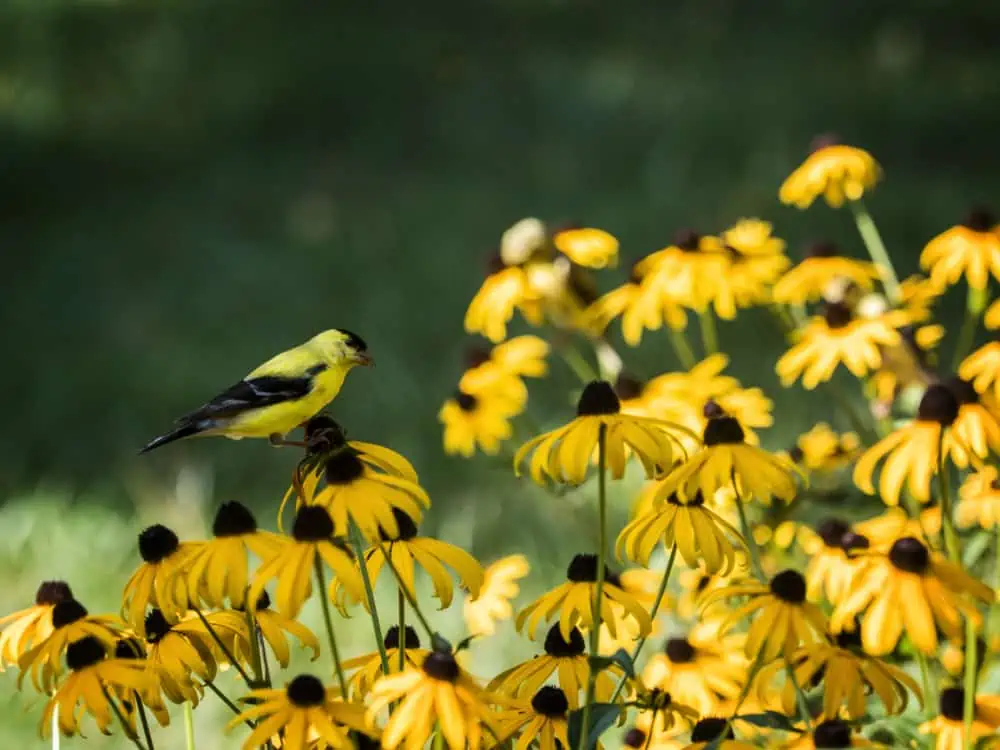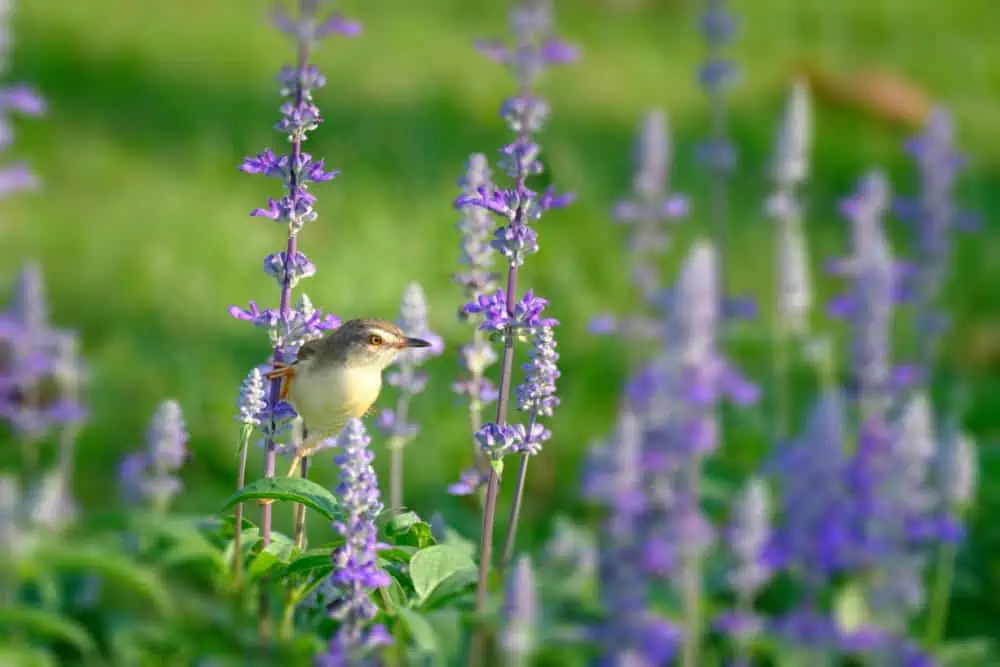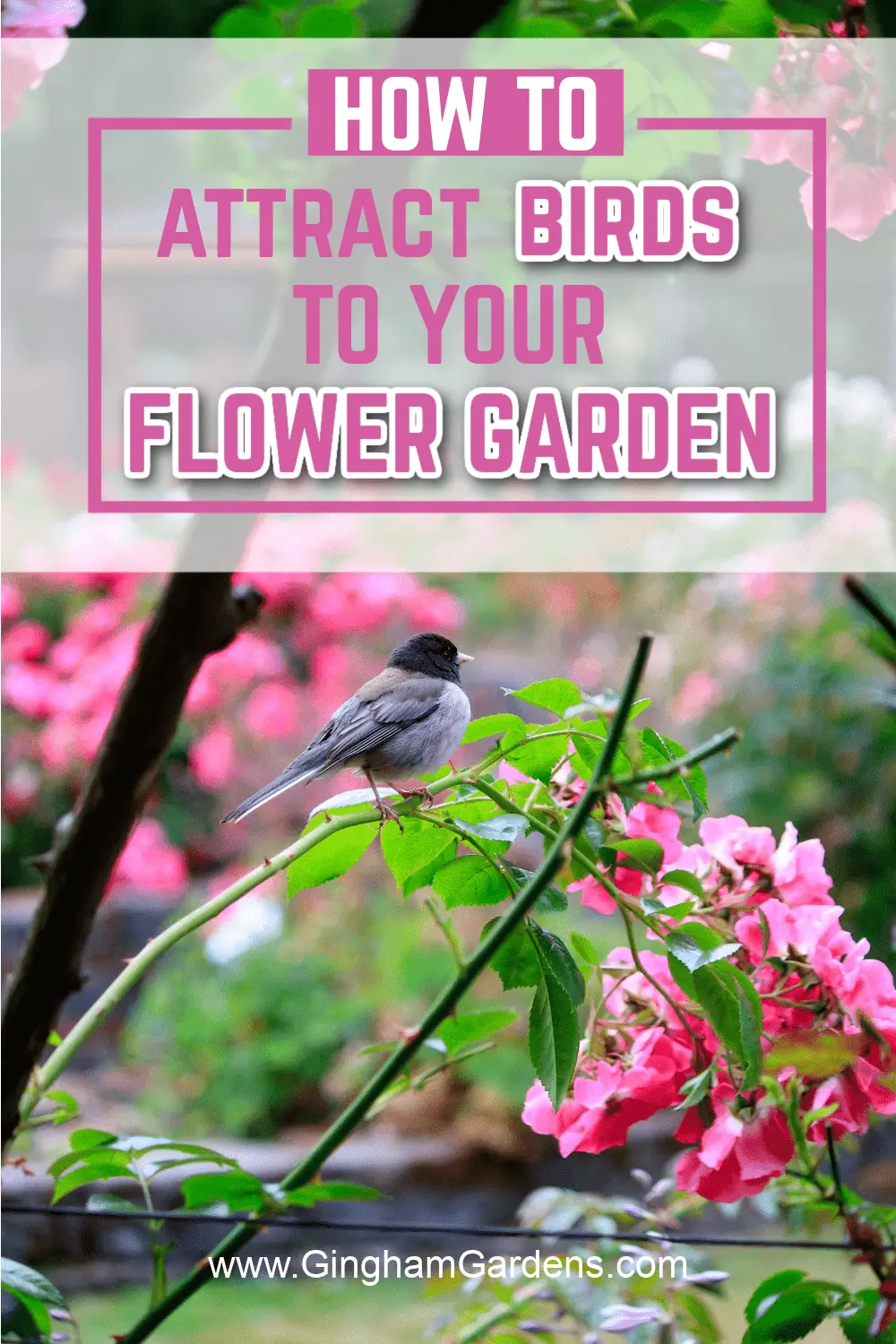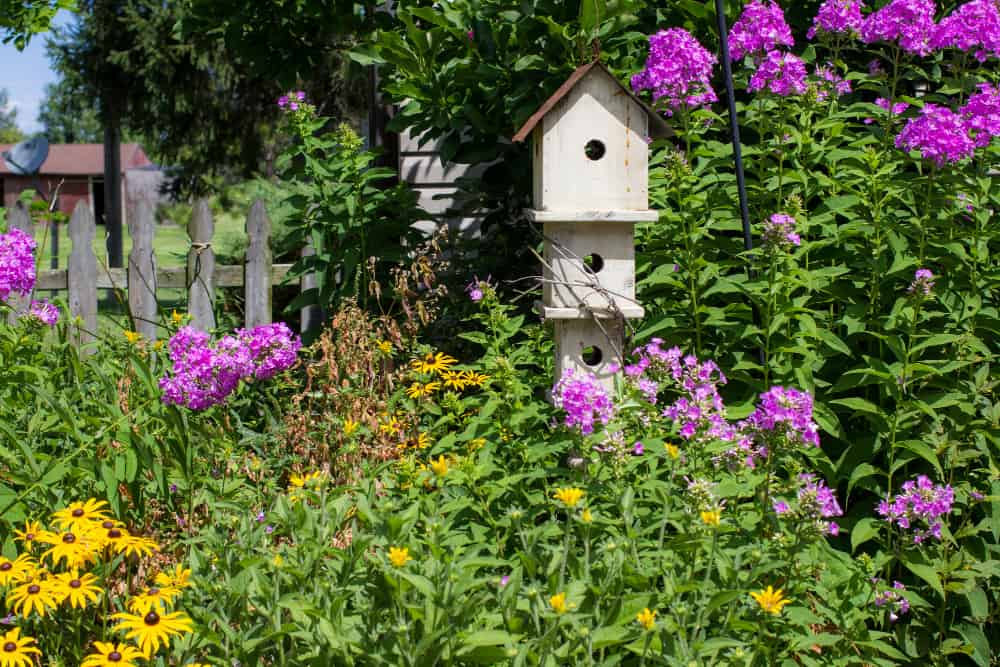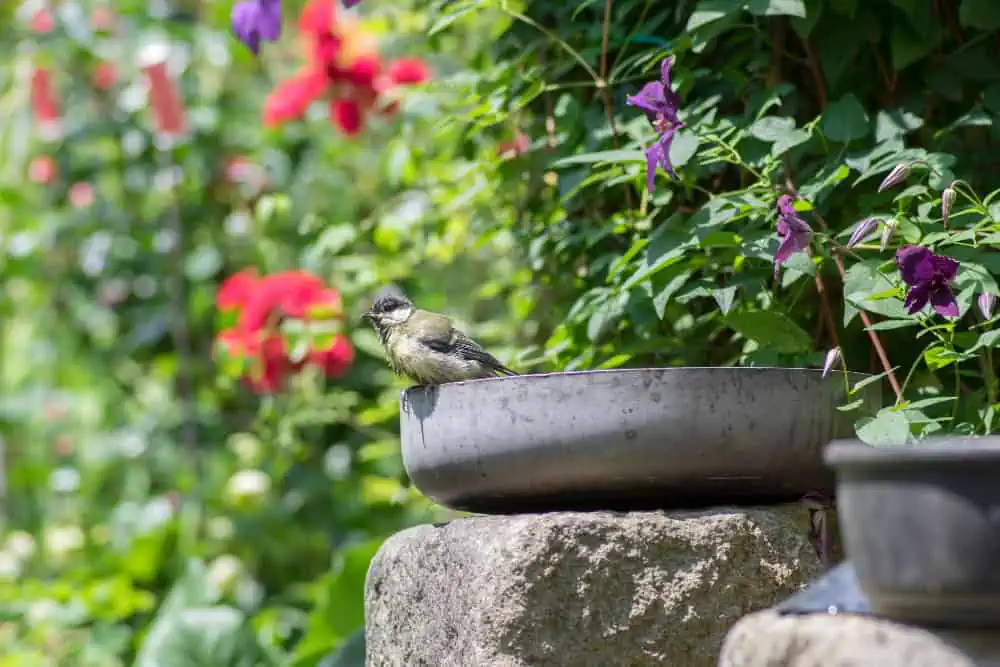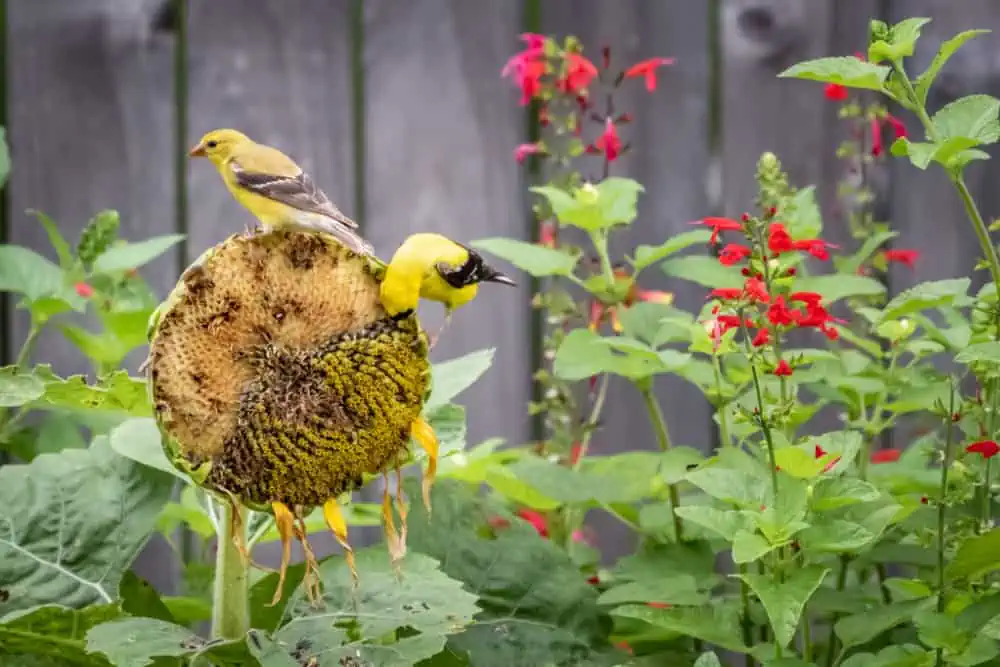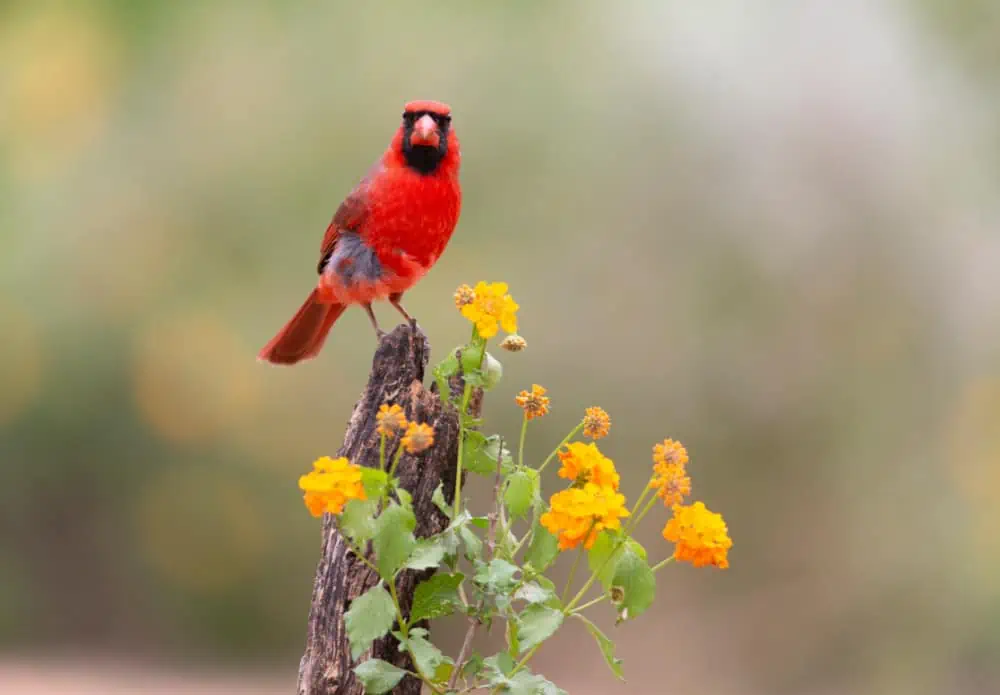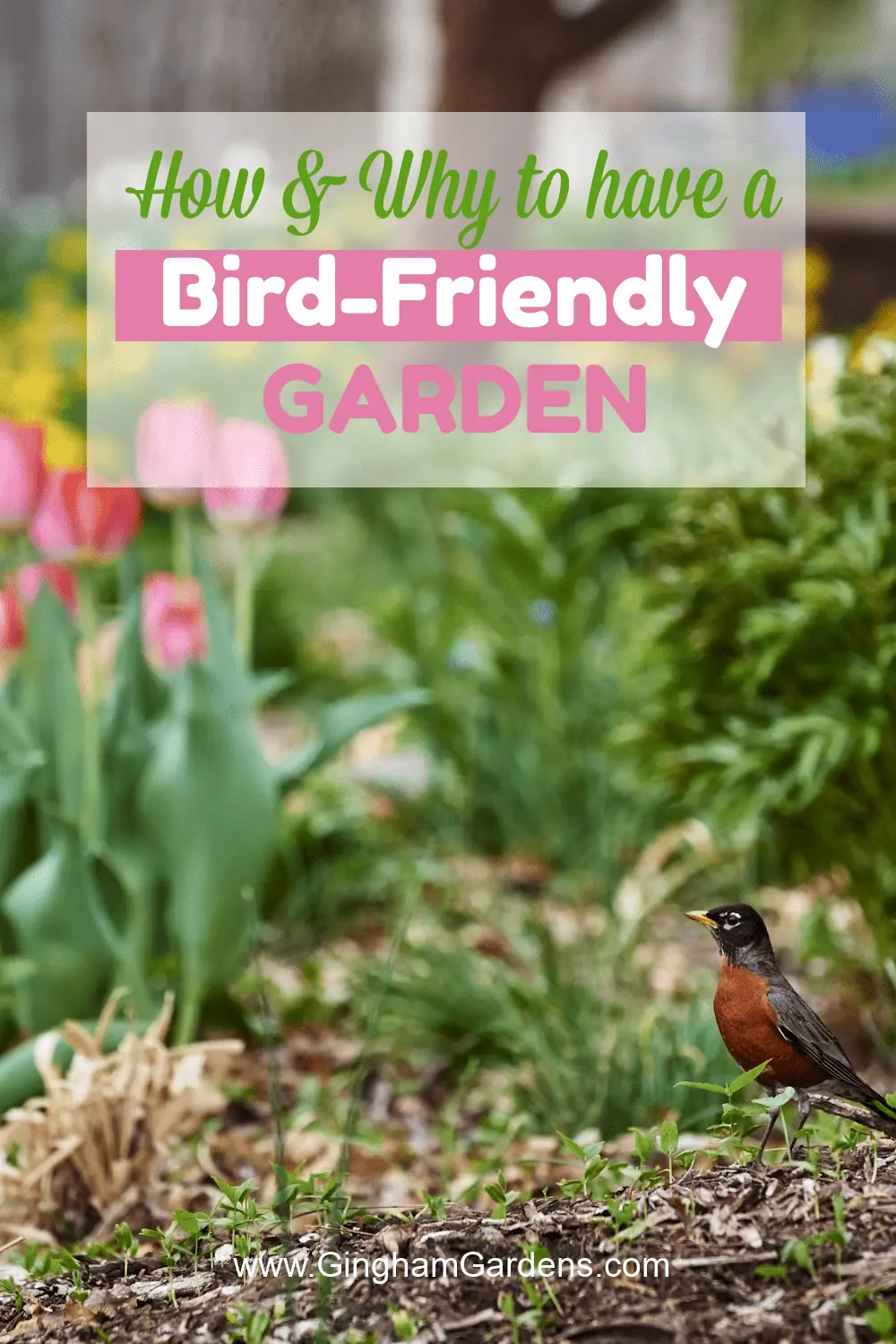12 Brilliant Tips for Creating a Bird Friendly Flower Garden
Invite nature into your yard by creating a bird friendly flower garden! By adding native plants, water features, and bird feeders, you can create a welcoming bird garden in no time. There’s something so lovely about having birds in the garden. It’s fun to watch them flit around and enjoy your backyard, perhaps even more than you do. It makes it feel like you’re creating a natural sanctuary instead of just gardening for yourself. I think as gardeners we’re already doing this and we don’t even realize it. That’s why it’s so natural for gardeners to be backyard bird watchers too.
It’s easy to create a bird-friendly landscape by imitating the natural habitats of your local birds. By adding a few different plants and creating the conditions for wild birds to find food, water, and shelter, you’ll start noticing a variety of birds hopping around your garden.
If you’re new to flower gardening, take advantage of these tips about how to start your own flower garden! Plan with these bird-friendly elements in mind to turn your yard into a mini oasis for wildlife.
This post contains affiliate links. If you click on
one of the links and make a purchase,
I may receive a small commission at no additional cost to you.
See full disclosure here.
What is a bird-friendly garden?
Bird-friendly yards are safe places where native bird species can find food, shelter, and water. They replicate the natural bird habitat in your area by adding native plants, water features, and roughage for building shelter.
These spaces entice birds as they appear to be safe, protected areas with plenty of food and fresh water. A bird-friendly garden is a great way to support your local bird population and provide hours of entertainment.
12 Tips on Creating a Bird-Friendly Flower Garden
1. Plant native plants
This is one of the most important things you can do to invite birds into your flower garden. They need food sources they recognize. Your local birds are uniquely adapted to the native trees and flowers in your region.
Add native plants to your garden to create a buffet of the best bird-friendly foods. Try planting a patch of local wildflowers or berry-producing shrubs that provide food throughout the seasons.
Avoid these invasive plants that can become harmful and invasive over time.
2. Minimize predators for a bird-friendly flower garden
Did you know outdoor cats kill approximately 2.4 billion birds yearly? For your garden to become a refuge for local wildlife, you must remove threats like domestic cats.
One option is to keep your cats inside, which will remove the risk altogether. If your cat needs to stay outside, put a bell on its collar to warn off your local birds.
Save a Pin to your favorite Pinterest gardening board so you can remember this post later.
3. Create shelter from harsh weather
In the wild, birds naturally hunt for dead trees and brush piles to create nests. If your garden birds can tuck away into a safe shelter, they’re more likely to find your garden inviting.
Try adding a few birdhouses or nest boxes if you’re trying to create shelter without the mess. Take note of the windiest areas of your garden and place them somewhere naturally sheltered from wind and rain. There are so many cute bird houses available and they can add so much charm to a flower garden. Be sure you can open the back or bottom of the birdhouse so it can be cleaned.
Here are some of my favorite handmade birdhouses on Etsy.
4. Foster insect growth
Many backyard birds feed exclusively on insects. These insect-eating birds will visit your yard looking for worms and bugs. Having a garden is an excellent start in general, as you’re likely already focusing on building soil health. This will naturally attract insects and worms. We’re all familiar with earthworm eating robins.
Other options are to make a bug hotel. This can be as simple as stacking a small heap of dried leaves and branches or installing a multi-level bug palace. Also, see #8.
Learn more about how to attract pollinators to your garden.
5. Add a water source to your bird friendly flower garden
Just like us, birds need clean water to survive. Add a couple of bird baths or open water sources for birds to dip into as needed. To minimize the spread of disease, algae, and mosquitoes, sanitize it approximately twice per week.
6. Plant bird-friendly flowers
Although native flowers are the best choice, many non-native plants provide tons of food for different birds. For example, sunflowers are a great source of food. As your seeds mature, you’ll notice birds darting around to peck the seeds out of the flower heads.
Plant specific flowers for seed-eating birds, like sunflowers, coneflowers, black-eyed Susans, zinnias, and more. When you are cleaning up in the fall leave the seed heads of these flowers and the birds will pick them clean. There are many seed eating birds in North America. Some favorites are gold finches, house finches, chickadees, cardinals and the list goes on and on. What seed eating birds do you have in your yard?
7. Install a bird feeder
If you’re short on food for your local birds, you can install a bird feeder. Personally, I’m not a big fan of bird feeders in the summer. They can start to attract pests like squirrels and other rodents, which aren’t what you want in your beautiful flower garden. I prefer to grow seed-producing flowers in summer instead and supplement them with a bird feeder during the colder times of the year.
8. Minimize use of pesticides and insecticides for a bird-friendly flower garden
If you’re trying to create a safe space for the different species of birds in your area, avoid pesticides that can make the plants and insects in your garden poisonous to them. Remember that some birds prefer to dine on different types of insects, so you don’t want to eliminate their food source.
Although it can be frustrating to fight unsavory insects and garden pests without chemicals, try using low-level interventions, like diluted dish soap or organic pest-control methods, to reduce your reliance on chemical insecticides and pesticides.
9. Grow ground cover
In the wild, birds expect to find a mixture of plants in any given area, including long grass, berry-producing ground covers, perennial flowers, and more. These offer food and are a great way to be protected from predators like hawks and other small animals.
Think of how you can blend the open spaces in your backyard with plants of varying heights and textures. These will help birds move safely around your yard and find materials for shelter, too.
10. Add a few trees
As much as it helps to grow flowers for your local birds, many need trees to find shelter and safety. There are plenty of great options for wildlife trees to add to your bird-friendly yard. Trees like mulberries, dogwood and evergreen trees will often provide shelter, natural materials, and plenty of food to feed throughout the year. Large shrubs also create a safe habitat for birds.
11. Embrace decay
To invite birds and other native wildlife into your garden, it’s important to honor the natural rhythms of the seasons. Part of this shift is to recognize the role of decay in a healthy ecosystem. Plus, old logs look so cool laying in a garden.
If we’re quick to remove all the fallen leaves or to pull plants that have finished flowering, we remove an opportunity for birds to forage for materials and find food. Don’t rush to remove the stalks of dead flowers. Let your flowers go to seed. When the leaves fall from your trees in the fall, leave them on the ground to create a habitat for insects and birds.
This approach might not always be pretty, but you’ll be rewarded with some excellent bird-watching.
12. Get specific
If you’re trying to invite a specific species of bird to your flower garden, you’ll want to do more research on their particular food requirements and preferences. This book will make it easy to identify the birds that visit your garden and select specific plants and conditions that make your yard a haven for finches, jays, or any other bird.
This title is another wonderful option to help you learn how to build your own bird houses, grow plants for seeds, set up water baths, and more.
Are you or do you have a backyard bird watcher in your family, be sure to check out this post.
If you’re passionate about supporting the local birds in your area, consider joining the National Audubon Society. They have tons of resources about caring for backyard birds and setting up bird-friendly communities. This is a great next step as you develop a bird-friendly flower garden in your backyard.
Although birds are naturally attracted to flower gardens just like humans are, I hope you’ve found at least a few helpful tips to make your garden even more of a bird-friendly flower garden! It’s so much fun getting acquainted with your local birds and I can’t wait to hear about the changes you’re making! Be sure to share your thoughts and experiences in the comments below.
Happy gardening,
Joanna
More Great Things on Gingham Gardens
Sign up to receive our weekly newsletters full of gardening tips. You’ll also get access to our Gardening Resources Library and all our helpful gardening printables.
More places to find Gingham Gardens:
- Visit Gingham Gardens on Pinterest.
- If you’re on Facebook, Gingham Gardens is also on Facebook.
- Stop by Gingham Gardens’ Amazon store!
- Love Etsy? Come see us on Etsy too.
Save a pin to your gardening board on Pinterest, so you can remember this post later:

